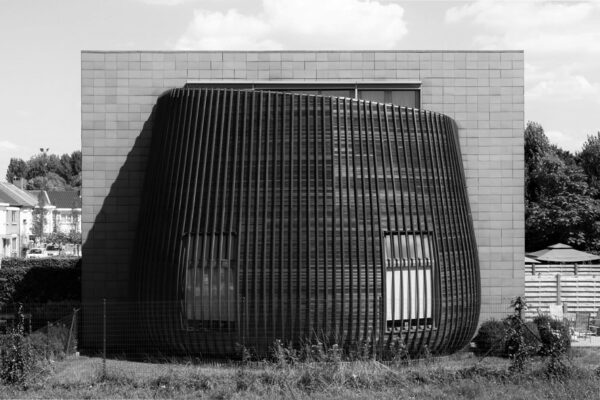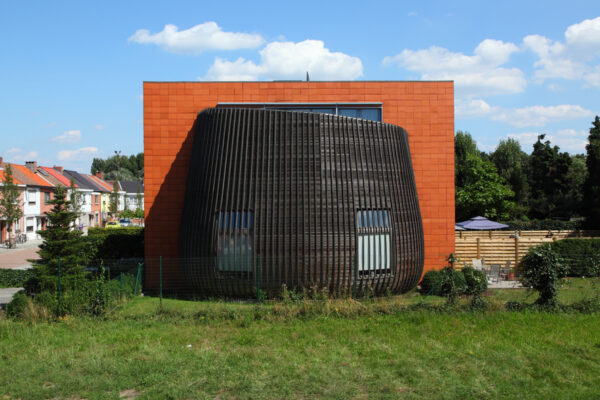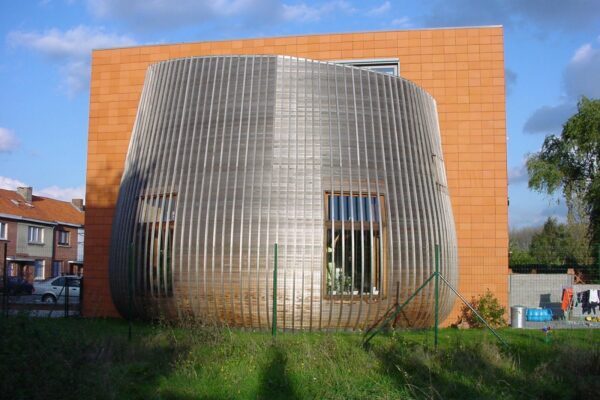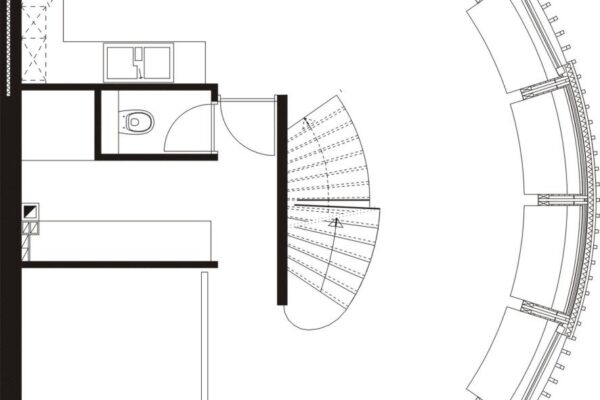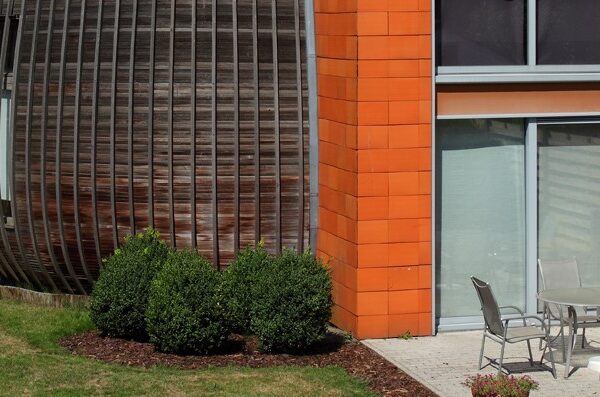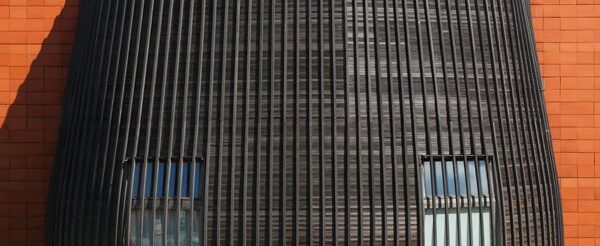A house as design brief is a challenge by definition, to design for a brother doubles up in terms of dedication and hesitation. The semi-detached building plot at the city outskirts is narrow, it is the last plot in that row before an open space cuts the street row in two.
On the other side of the street small workmans houses with only 2 levels and a sloped roof, contrast with the early 70’s urban zoning opposite.
We split the house therefor into a high and a lower, with the lower part serving as connection space and communal space for the house members.
The construction is hybrid: a brick walls and concrete floors part attaches to the neighbour, a wood structure envelope wraps up around a roof terrace, a staircase and the communal space.
The interior climate is split also: the wooden structure is not meant to be at maximum heat in the midst of winter, it therefor also invites to seek the intimacy of the closed and thermal capacity driven spaces close to the neighbours. This reduces the heated volume and creates a differentiation between interior and exterior climate with great energetic efficiency.
Materials were carefully chosen for natural and renewable sources and all wood elements were left untreated, paints and other finishes were based on natural materials only.
For the wood structure, we used wooden ship carpentry: steamed and bent wood, rounded edges, ribs and counter lattices.
The construction is highly circular in functionality: ground and first floor can be reorganized differently to house home working office and livings spaces. The materials are circular too: concrete floors are made of detachable girders and filling panels, all brick walls are recyclable, the exterior finish of the brick building is made of clay ceramic tiles, natural coloured, hanging freely on a wood support underneath. The entire wood structure is dismountable.
The only non-reusable or recyclable elements are the concrete floor topping and foundation.
The dedication was to achieve the highest possible spatial quality at the lowest cost, the ship technique turned out to be less costly than expected, but the terrace on top, concealed behind the wall proved a challenge for the exterior carpentry works on top of the sloping volume.
The hesitation consisted in the position to take vis-à-vis the neighbours: this house did not want to blend in, because it would be presumptuous towards the workmans houses would it continue the 70s zoning volumes, as if it had not noticed. But is a deep but visibly expressive bow towards the audience a better answer than a tongue-in-cheek comment about the ill fated zoning? The answer remains even today.
- DAE, structural engineering, architectural design

